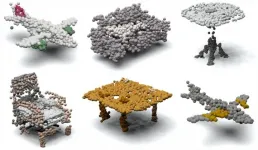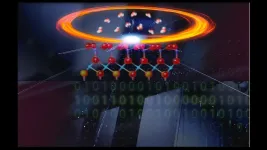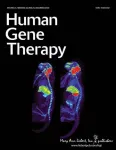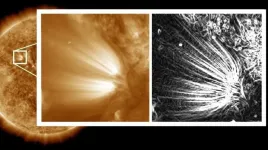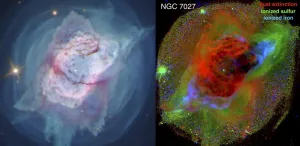Protected areas vulnerable to growing emphasis on food security
New study shows croplands are prevalent in protected areas, challenging their efficacy in meeting conservation goals
2021-01-20
(Press-News.org) Protected areas are critical to mitigating extinction of species; however, they may also be in
conflict with efforts to feed the growing human population. A new study shows that 6% of all
global terrestrial protected areas are already made up of cropland, a heavily modified habitat
that is often not suitable for supporting wildlife. Worse, 22% of this cropland occurs in areas
supposedly enjoying the strictest levels of protection, the keystone of global biodiversity
protection efforts.
This finding was published in the Proceedings of the National Academy of Sciences by
researchers at the University of Maryland's National Socio-Environmental Synthesis Center
(SESYNC) and National Institute for Mathematical and Biological Synthesis ( NIMBioS ) at the
University of Tennessee. In order to comprehensively examine global cropland impacts in
protected areas for the first time, the authors synthesized a number of remotely sensed
cropland estimates and diverse socio-environmental datasets.
The persistence of many native species--particularly habitat specialists (species that depend on
a narrow set of natural systems), rare, and threatened species--is incompatible with conversion
of habitat to cropland, thus compromising the primary conservation goal of these protected
areas. Guided by the needs of conservation end users, the researchers used methods that
provide an important benchmark and reproducible methods for rapid monitoring of cropland in
protected areas.
"Combining multiple remote sensing approaches with ongoing inventory and survey work will
allow us to better understand the impacts of conversion on different taxa," says lead author
Varsha Vijay, a conservation scientist who was a postdoctoral fellow at SESYNC while working
on the study. "Cropland in biodiversity hotspots warrant particularly careful monitoring. In many
of these regions, expanding cropland to meet increasing food demand exposes species to both
habitat loss and increased human-wildlife conflict," she adds.
Countries with higher population density, lower income inequality, and higher agricultural
suitability tend to have more cropland in their protected areas. Even though cropland in
protected areas is most dominant in mid-northern latitudes, the tradeoffs between biodiversity
and food security may be most acute in the tropics and subtropics. This increased tradeoff is
due to higher levels of species richness coinciding with a high proportion of cropland-impacted
protected areas.
"The findings of this study emphasize the need to move beyond area-based conservation
targets and develop quantitative measures to improve conservation outcomes in protected
areas, especially in areas of high food insecurity and biodiversity" says Lucas Joppa, chief
environmental officer of Microsoft, who has published numerous papers on the topic of
protected area effectiveness but who was not an author on the study.
2021 is a historic "Year of Impact," when many countries and international agencies are
developing new decadal targets for biodiversity conservation and protected areas. As countries
aim to meet these goals and the 2030 Sustainable Development Goals, there is an increasing
need to understand synergies and tradeoffs between these goals in order to ensure a more
sustainable future. Studies such as these offer insights for protected area planning and
management, particularly as future protected areas expand into an agriculturally dominated
matrix. Though the study reveals many challenges for the future, it also reveals potential
scenarios for restoration in mid-northern latitudes and for cooperation between conservation
and food programs in regions with both high levels of food insecurity and biodiversity.
"Despite clear connections between food production and biodiversity, conservation and
development planning are still often treated as independent processes," says study co-author
Paul Armsworth from the University of Tennessee. "Rapid advances in data availability provide
exciting opportunities for bringing the two processes together," adds Vijay.
INFORMATION:
The paper, "Pervasive cropland in protected areas highlight trade-offs between conservation
and food security," Varsha Vijay and Paul Armsworth, appears in the Proceedings of the
National Academy of Sciences. doi:10.1073/pnas.2010121118
https://www.pnas.org/content/118/4/e2010121118
The study is based upon work funded by the National Science Foundation (Award No.: DBI-
1639145).
[Attachments] See images for this press release:
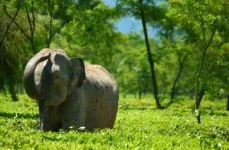
ELSE PRESS RELEASES FROM THIS DATE:
2021-01-20
The Tiger Rattlesnake possesses the simplest, yet most toxic venom of any rattlesnake species, and now new research from a team lead by a University of South Florida biologist can explain the genetics behind the predator's fearsome bite.
Published in the new edition of "Proceedings of the National Academy of Sciences," USF Department of Integrative Biology Assistant Professor Mark Margres and colleagues across the southeastern United States have sequenced the genome of the Tiger Rattlesnake to understand the genotype of the venom trait. Despite the simplicity of the Tiger Rattlesnake's venom, Margres says it is roughly 40 times more toxic than the venom of the Eastern Diamondback ...
2021-01-20
A new therapy developed by researchers at Rush University Medical Center is showing success as a way to prevent COVID-19 symptoms in mice.
In a study published in the Journal of Neuroimmune Pharmacology, mouse models with COVID-19 showed positive results when a small peptide was introduced nasally. The peptide proved effective in reducing fever, protecting the lungs, improving heart function and reversing cytokine storm -- a condition in which an infection triggers the immune system to flood the bloodstream with inflammatory proteins. The researchers also report success in preventing the disease from progression.
"This ...
2021-01-19
Disasters in high-risk industries can have catastrophic environmental, financial and human safety consequences. One way these industries help prevent and mitigate disasters is formal procedures designed to standardize how work is done. These procedures typically come in the form of a written document workers use while performing a task.
Camille Peres, associate professor at the Texas A&M University School of Public Health, said that there are two models of safety companies usually follow to varying degrees, whether they realize it or not. Safety model one "is very much a control paradigm," Peres said. "The idea the company has is that if they control absolutely everything that's going on, then they will be safe." This ...
2021-01-19
Before he joined the University of Texas at Arlington as an Assistant Professor in the Department of Computer Science and Engineering and founded the Robotic Vision Laboratory there, William Beksi interned at iRobot, the world's largest producer of consumer robots (mainly through its Roomba robotic vacuum).
To navigate built environments, robots must be able to sense and make decisions about how to interact with their locale. Researchers at the company were interested in using machine and deep learning to train their robots to learn about objects, but doing so requires a large dataset of images. While there are millions of photos and videos of rooms, none were shot from the vantage point of a robotic vacuum. Efforts to train using images with human-centric perspectives failed.
Beksi's ...
2021-01-19
Following a series of studies on termite mound physiology and morphogenesis over the past decade, researchers at the Harvard John A. Paulson School of Engineering and Applied Sciences have now developed a mathematical model to help explain how termites construct their intricate mounds.
The research is published in the Proceedings of the National Academy of Sciences.
"Termite mounds are amongst the greatest examples of animal architecture on our planet," said L. Mahadevan, the Lola England de Valpine Professor of Applied Mathematics, of Organismic and Evolutionary Biology, and ...
2021-01-19
Computer simulations hold tremendous promise to accelerate the molecular engineering of green energy technologies, such as new systems for electrical energy storage and solar energy usage, as well as carbon dioxide capture from the environment. However, the predictive power of these simulations depends on having a means to confirm that they do indeed describe the real world.
Such confirmation is no simple task. Many assumptions enter the setup of these simulations. As a result, the simulations must be carefully checked by using an appropriate "validation protocol" involving experimental measurements.
"We focused on a solid/liquid interface because interfaces are ubiquitous in materials, and those between oxides and water are key in many energy applications." -- Giulia Galli, theorist ...
2021-01-19
New Rochelle, NY, January 19, 2021--Gene editing therapies, including CRISPR-Cas systems, offer the potential to correct mutations causing inherited retinal degenerations, a leading cause of blindness. Technological advances in gene editing, continuing safety concerns, and strategies to overcome these challenges are highlighted in the peer-reviewed journal Human Gene Therapy. Click here to read the full-text article free on the Human Gene Therapy website.
"Currently, the field is undergoing rapid development with a number of competing gene editing strategies, including allele-specific knock-down, base editing, prime editing, and RNA editing, are under investigation. Each offers a ...
2021-01-19
ITHACA, N.Y. - When the semester shifted online amid the COVID-19 pandemic last spring, Cornell University instructor Mark Sarvary, and his teaching staff decided to encourage - but not require - students to switch on their cameras.
It didn't turn out as they'd hoped.
"Most of our students had their cameras off," said Sarvary, director of the Investigative Biology Teaching Laboratories in the College of Agriculture and Life Sciences (CALS).
"Students enjoy seeing each other when they work in groups. And instructors like seeing students, because it's a way to assess whether or not they understand the material," Sarvary said. "When we switched to online learning, that component got lost. We wanted to investigate the reasons ...
2021-01-19
Scientists have combined NASA data and cutting-edge image processing to gain new insight into the solar structures that create the Sun's flow of high-speed solar wind, detailed in new research published today in The Astrophysical Journal. This first look at relatively small features, dubbed "plumelets," could help scientists understand how and why disturbances form in the solar wind.
The Sun's magnetic influence stretches billions of miles, far past the orbit of Pluto and the planets, defined by a driving force: the solar wind. This constant outflow of solar material carries the Sun's magnetic field out into space, where it shapes the environments around Earth, other worlds, and in the reaches of deep space. Changes in the solar wind ...
2021-01-19
Images of two iconic planetary nebulae taken by the Hubble Space Telescope are revealing new information about how they develop their dramatic features. Researchers from Rochester Institute of Technology and Green Bank Observatory presented new findings about the Butterfly Nebula (NGC 6302) and the Jewel Bug Nebula (NGC 7027) at the 237th meeting of the American Astronomical Society on Friday, Jan. 15.
Hubble's Wide Field Camera 3 observed the nebulae in 2019 and early 2020 using its full, panchromatic capabilities, and the astronomers involved in the project ...
LAST 30 PRESS RELEASES:
[Press-News.org] Protected areas vulnerable to growing emphasis on food security
New study shows croplands are prevalent in protected areas, challenging their efficacy in meeting conservation goals

